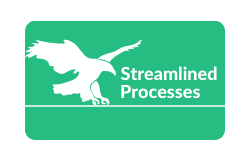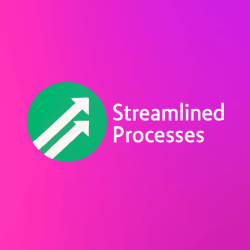For Saas Business Growth Tools, see our main page here.
Understanding the Role of Tools in SaaS Business Growth
Growing a SaaS business involves more than a solid product. Success often hinges on selecting the right tools to support each stage of the customer journey. From lead generation to customer support, smart integration of Saas Business Growth Tools streamlines operations and accelerates results.
Why do tools matter so much in SaaS? First, the competitive landscape is intense. Secondly, customers expect fast onboarding, responsive support, and constant innovation. Therefore, leveraging platforms with built-in automation, analytics, and scalability features is not only beneficial—it’s essential.
Top Saas Business Growth Tools for Sales Enablement
Sales enablement tools boost conversion by equipping teams with data, content, and process automation. In a SaaS environment, sales cycles can be long and complex. Fortunately, certain platforms provide clarity through automation and insights.
- HubSpot Sales Hub: Offers email tracking, deal pipelines, and automated follow-ups. Especially helpful for early-stage SaaS companies.
- Close: Tailored for SaaS sales teams, it integrates calling, email, and task workflows inside one dashboard.
- PandaDoc: Useful for speeding up closing deals with customizable proposal templates and e-signatures.
These tools don’t just help teams work faster—they enable smarter, data-driven decisions. As a result, companies reduce CAC (customer acquisition cost) and improve ROI across campaigns.
Customer Success Platforms That Drive Retention
Retaining customers is often more profitable than acquiring new ones. This is especially true in SaaS, where recurring revenue sustains long-term growth. SaaS business growth tools for customer success focus on monitoring health scores, reducing churn, and increasing upsell opportunities.
- Totango: Offers real-time task tracking and customer journeys tailored to lifecycle stages.
- Gainsight: One of the most comprehensive platforms with integrations into CRMs, product usage data, and NPS tracking.
- ChurnZero: Especially useful for usage-based products. It helps success teams engage users at the right time.
Tools like these bridge the gap between usage analytics and human support. Consequently, companies can identify at-risk accounts before they cancel, offering proactive support at scale.
Marketing Automation Tools for Acquisition and Nurturing
Effective SaaS marketing requires consistency, personalization, and clear funnel analytics. Marketing automation tools allow teams to set up and track multi-touch campaigns without manual labor.
- ActiveCampaign: Combines email marketing, automation, and CRM in one intuitive interface. Great for scaling B2B SaaS.
- Autopilot: Visual tools make customer journey mapping simple and insightful. It’s built for lifecycle marketing.
- Drip: Great for SaaS businesses that offer free trials and require behavior-based automations.
These marketing engine tools help businesses write smarter emails, retarget lost leads, and boost conversion. Moreover, they support A/B testing and behavioral triggers for precision targeting.
Analytics and Performance Tracking with Saas Business Growth Tools
Data is the lifeblood of SaaS optimization. Without real-time metrics, adjusting pricing, product features, or sales efforts becomes a guessing game. That’s where these tools transform strategy into science.
- Mixpanel: Focused on product analytics. It tracks user actions and pinpoints drop-off areas in funnels.
- ChartMogul: Popular among subscription-based SaaS. It calculates MRR, CAC, and other vital growth indicators.
- Segment: Acts as a data pipeline, aggregating insights from multiple sources like email, CRM, and apps.
For instance, a SaaS business using Mixpanel might notice that users skip a key onboarding step. They can fix that friction and improve retention fast. Consequently, growth becomes purposeful, not accidental.
Product Management Tools That Fuel Innovation
SaaS firms must evolve constantly. Product teams rely on tools that help with agile planning, feature requests, roadmaps, and user feedback. These allow faster release cycles and better alignment with customer needs.
- Productboard: Helps turn customer feedback into actionable product decisions and strategic roadmaps.
- Jira: A robust platform for developer collaboration, backlog grooming, and sprint management.
- UseResponse: Gathers customer feedback and integrates it with the product roadmap.
With such tools, SaaS teams can stay customer-focused while managing internal priorities. In other words, innovation becomes efficient and user-oriented.
Integration Tools That Connect Saas Business Growth Tools Seamlessly
Working with multiple systems can slow teams down—unless you integrate them. Integration platforms help unify data and automate tasks between tools. Therefore, they are foundational to scalable SaaS growth.
- Zapier: Ideal for connecting apps without code. It automates repetitive tasks across sales, marketing, and support.
- Workato: More powerful for enterprise-grade integrations that need customization and control.
- Tray.io: Great for product teams to integrate internal tools with third-party platforms.
For example, syncing a CRM with an email tool ensures leads are nurtured automatically. Consequently, fewer deals slip through the cracks, and your stack works better together.
Emerging Trends in Saas Business Growth Tools
Growth tools continue to evolve thanks to AI, user behavior modeling, and mobile integration. Companies like Notion and Loom show how SaaS firms can grow using products that market themselves via virality and user delight.
Moreover, AI-driven tools simplify complex workflows. Tools like Lavender use AI to optimize sales emails in real time, while Copy.ai speeds up content production. These newer additions represent the fusion of productivity and intelligence that defines modern SaaS strategy.
As a result, adopting cutting-edge tools early can offer a strategic edge. However, it’s vital to balance innovation with tool fatigue, ensuring each piece adds real value.
Frequently Asked Questions (FAQ)
What makes a great SaaS business growth tool?
A great tool should be scalable, integrate well with your tech stack, and offer measurable ROI. It must also fit your team’s unique workflow.
Are free tools good enough to start?
In many cases, yes. Tools like HubSpot’s free CRM or Mailchimp for early-stage email marketing offer ample room to grow. However, as your business matures, premium features become essential.
How do I avoid “tool overload”?
Audit usage quarterly. Choose tools for long-term value, not trendiness. Prioritize apps that solve a core problem or automate a key function.
Can AI really make a difference in SaaS growth?
Yes, and it’s growing fast. AI tools assist with personalization, content creation, lead scoring, and customer support—saving time and boosting conversions naturally.
This article was created with the assistance of AI tools and reviewed by our team at Streamlined Processes LLC to ensure accuracy and relevance.
Follow us on Facebook here.

